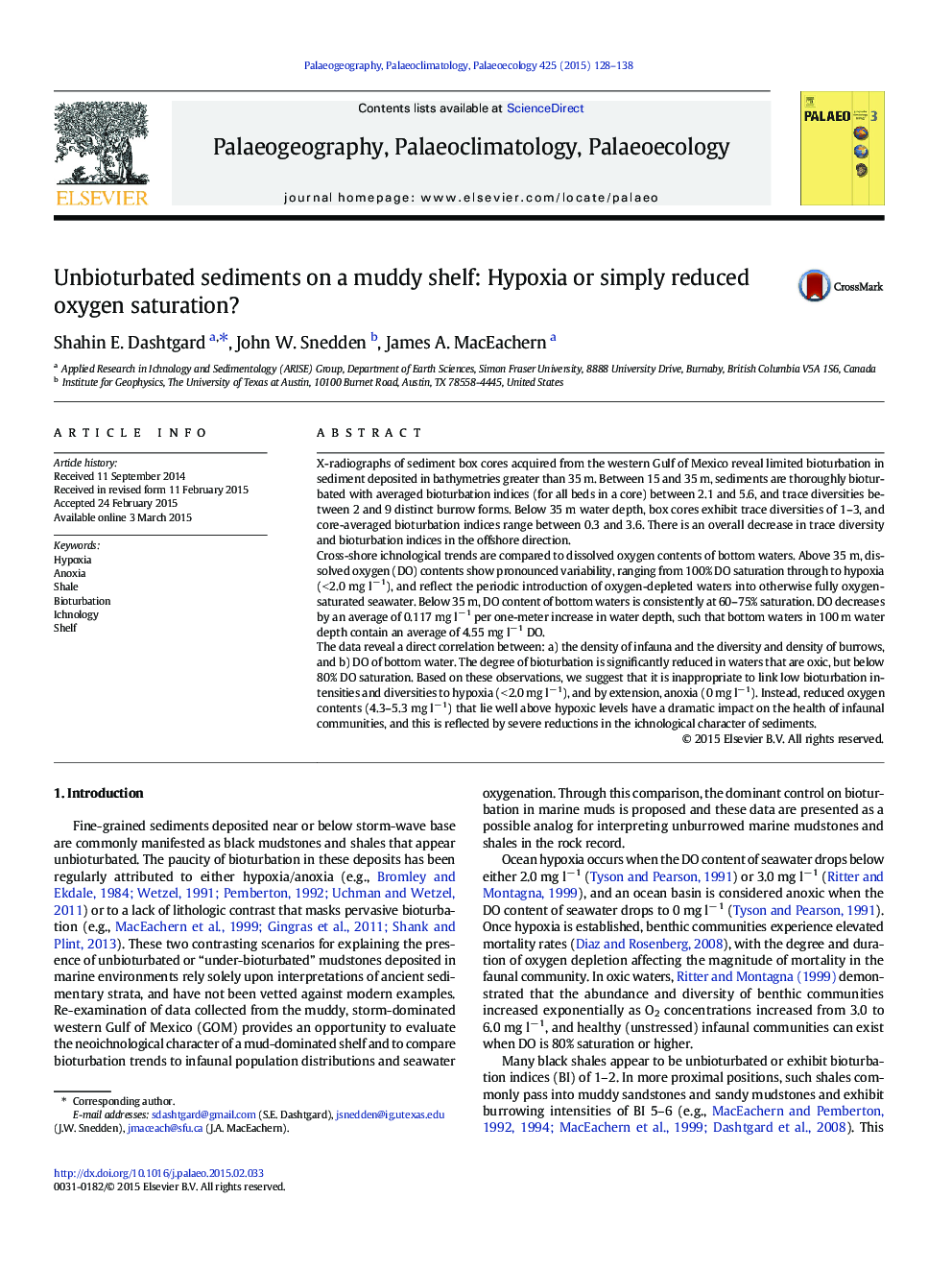| Article ID | Journal | Published Year | Pages | File Type |
|---|---|---|---|---|
| 6349749 | Palaeogeography, Palaeoclimatology, Palaeoecology | 2015 | 11 Pages |
Abstract
The data reveal a direct correlation between: a) the density of infauna and the diversity and density of burrows, and b) DO of bottom water. The degree of bioturbation is significantly reduced in waters that are oxic, but below 80% DO saturation. Based on these observations, we suggest that it is inappropriate to link low bioturbation intensities and diversities to hypoxia (< 2.0 mg lâ 1), and by extension, anoxia (0 mg lâ 1). Instead, reduced oxygen contents (4.3-5.3 mg lâ 1) that lie well above hypoxic levels have a dramatic impact on the health of infaunal communities, and this is reflected by severe reductions in the ichnological character of sediments.
Related Topics
Physical Sciences and Engineering
Earth and Planetary Sciences
Earth-Surface Processes
Authors
Shahin E. Dashtgard, John W. Snedden, James A. MacEachern,
